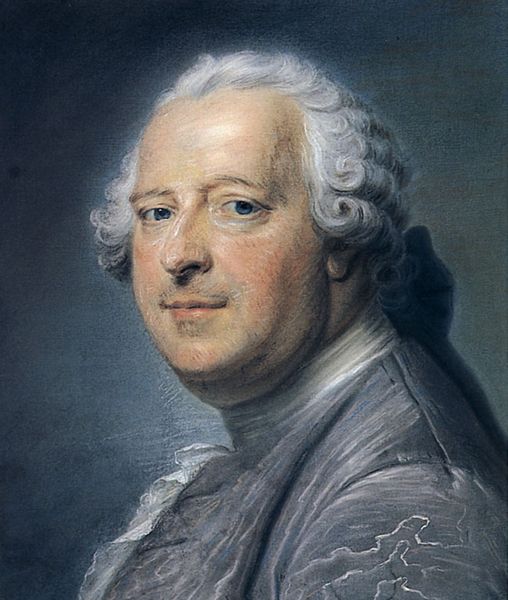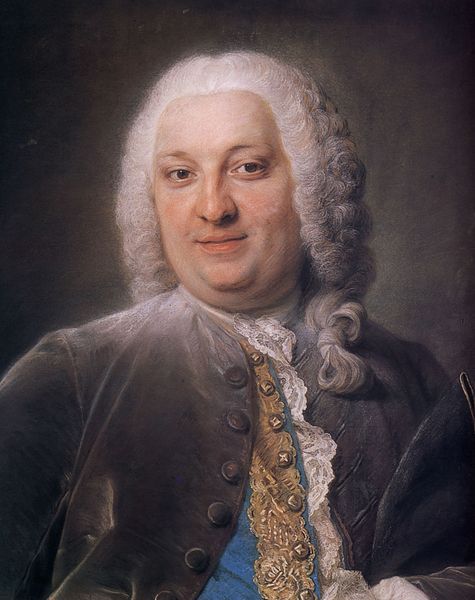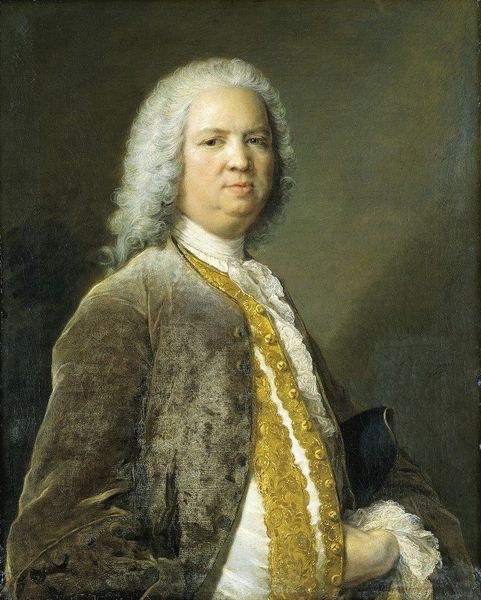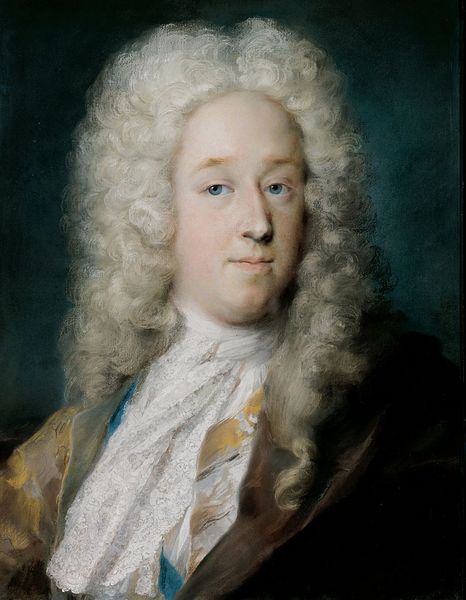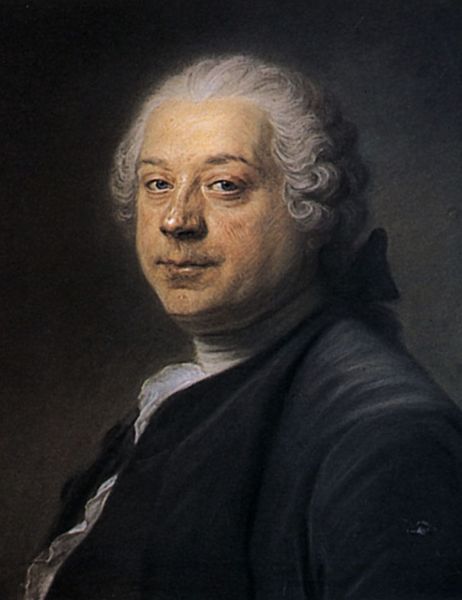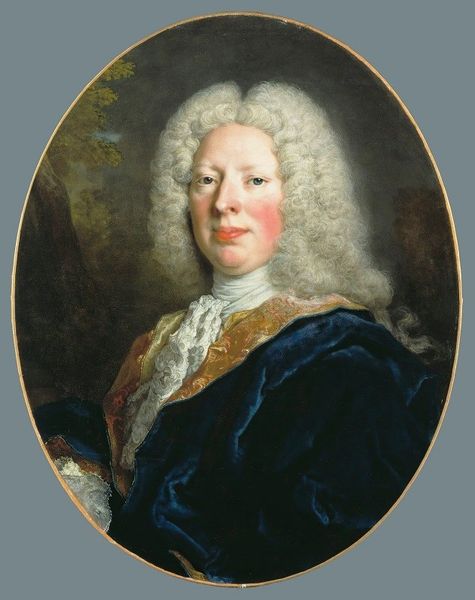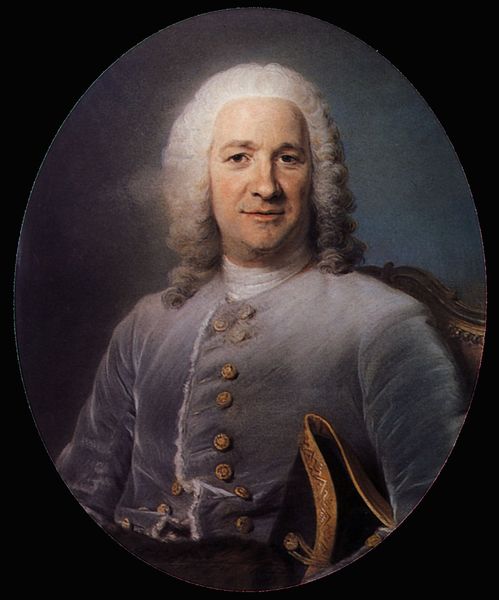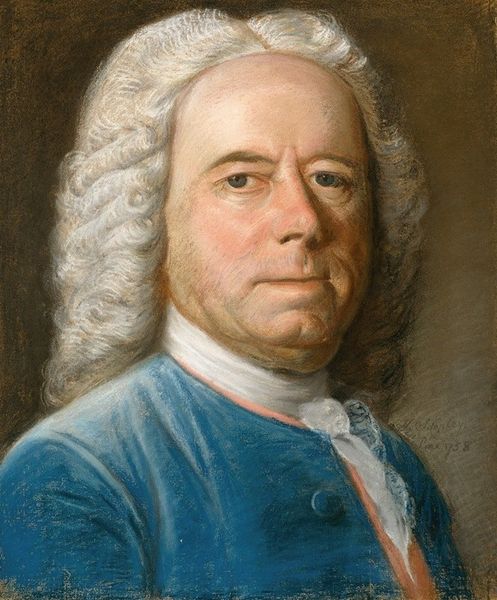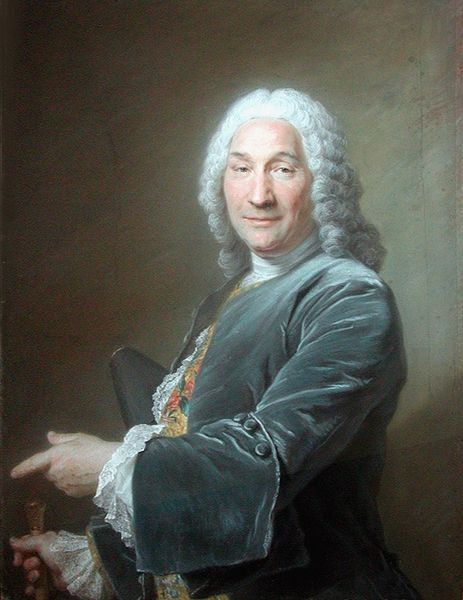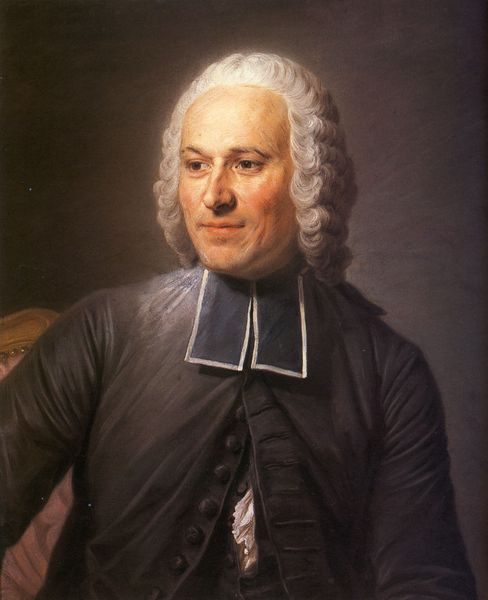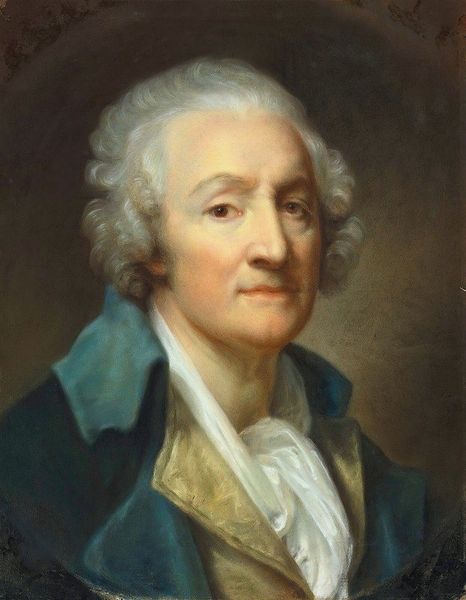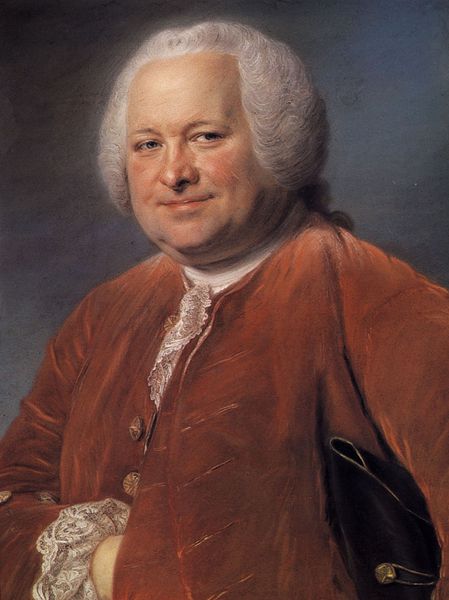
oil-paint, pastel
#
portrait
#
allegory
#
oil-paint
#
figuration
#
famous-people
#
romanticism
#
pastel
#
history-painting
#
portrait art
#
rococo
Copyright: Public domain
Curator: Let’s spend a moment with this compelling portrait of Alexandre-Jean-Joseph Le Riche de La Pouplinière, created by Maurice Quentin de La Tour. Editor: My initial response is one of calm authority. There's a real presence emanating from the subject’s direct gaze and restrained composure. Curator: Absolutely. La Pouplinière was a significant figure in 18th-century French society, a wealthy financier and patron of the arts. Understanding his position within the context of the French aristocracy and their cultural influence is crucial to interpreting the painting. Editor: How were portraits used back then? Is this image a tool for La Pouplinière? Curator: Portraits like this served as visual representations of status and power. Commissioning La Tour, who was highly sought after, further solidified La Pouplinière's prominence. It spoke volumes about taste, wealth, and social network, communicating to others who this individual was in French society. Editor: I'm drawn to the apparent intimacy captured in this painting. How do you read La Tour's artistic intentions and what broader statements do you feel he is trying to say here? Curator: La Tour was known for his exceptional ability to capture not only a likeness, but also a sense of personality. The relaxed pose, coupled with his somewhat quizzical expression, suggests La Tour tried to illustrate some kind of enlightened spirit, an emblem of French society as they saw themselves at this time. Editor: The textures also contribute significantly; the softness of the face contrasts with the sharp ruffles. Those details draw me into thinking of class and gender dynamics of this portrait's intended audience. Did portraits act differently for men than they did for women? Curator: Definitely. This era saw increasing discussions around sensibility and naturalism in art. This is an expression of patriarchal norms and idealized images, with an assumed (usually male) gaze built in the tradition of art that would have seen the work when originally displayed. Editor: This portrait encourages us to think about what it means to be human and of power; it feels quite present. Curator: Indeed. Examining artwork through social and historical lenses deepens our engagement and sheds light on societal currents within artistic choices.
Comments
No comments
Be the first to comment and join the conversation on the ultimate creative platform.
